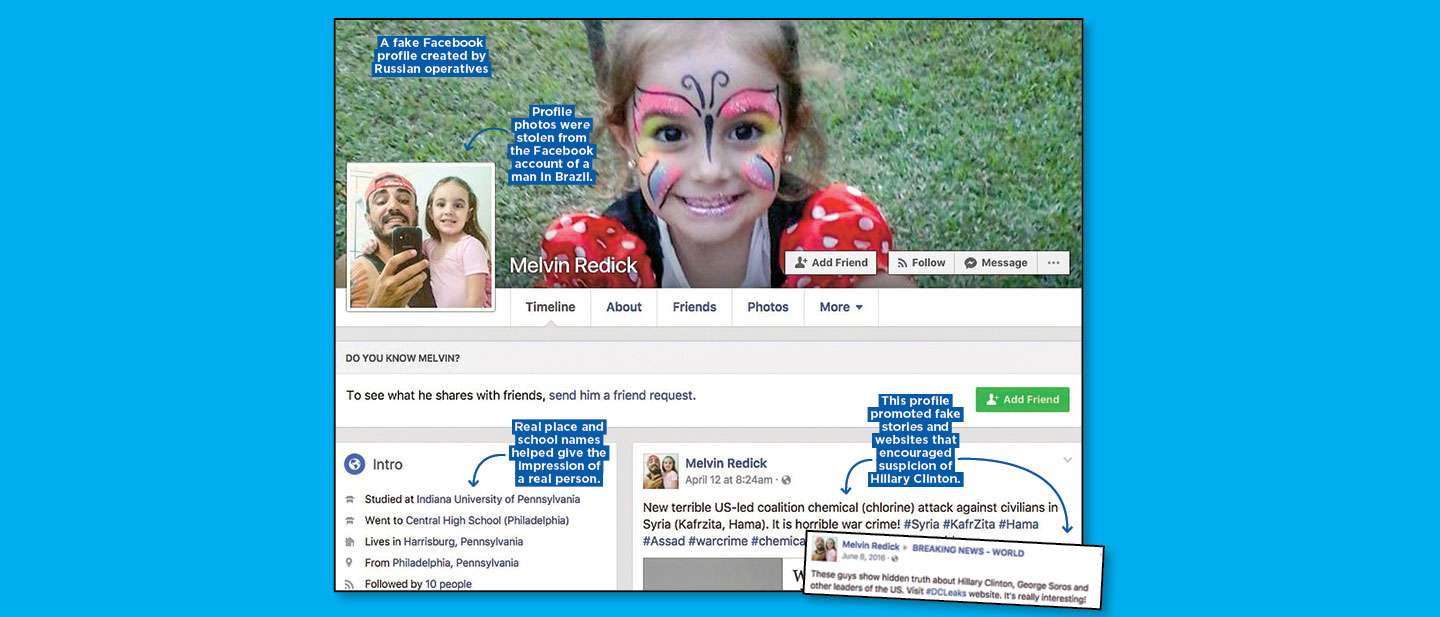The facebook page of Melvin Redick seemed innocent enough. His profile photo showed a friendly-looking American posing with his daughter. He said he lived in Harrisburg, Pennsylvania, and had graduated from Central High School.
But Redick, it turns out, was the fictional creation of Russians. The charming photos were actually stolen from the Facebook account of a Brazilian man (see graphic, at top).
The real purpose of the Facebook page, posted during the presidential campaign of 2016, was to direct readers to a website called DCLeaks. The site featured emails hacked from the computers of the Democratic Party and false stories damaging to Hillary Clinton, the Democratic candidate for president. The Russians’ intent, U.S. officials say, was to boost the campaign of Republican Donald Trump.
It’s now clear that Russian operatives created hundreds of fake accounts on social media sites like Facebook and Instagram to “sow discord in the U.S. political system, including the 2016 presidential election,” according to the U.S. Department of Justice.

